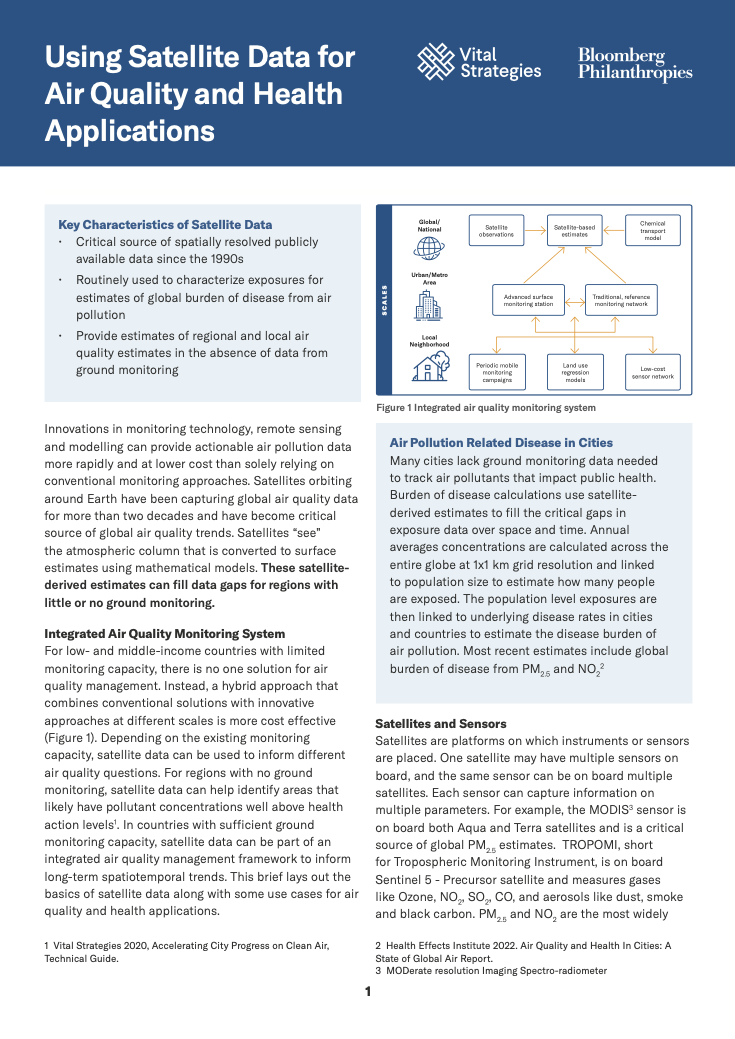More than 90% of the world breathes polluted air. Yet, many cities lack ground monitoring data needed to track air pollutants that impact public health.
For countries with limited monitoring capacity, there is no one solution for air quality management. Instead, a hybrid approach that combines conventional solutions with innovative approaches at different scales is more cost effective. One approach includes the use of satellites and sensors. Satellites orbiting around Earth have been capturing global air quality data for more than two decades and have become critical source of global air quality trends. Satellites “see” the atmospheric column that is converted to surface estimates using mathematical models. These satellite derived estimates can fill data gaps and provide estimates of regional and local air quality in the absence of data from ground monitoring
This brief provides an overview on using satellite data for air quality and health applications, resources and trainings for cities to start integrating satellite data into their air quality management plans and national and access to regional datasets.
Recent Abstracts
Childhood Lead Exposure Prevention: Assessment Of Blood Lead Surveillance Capacity Maharashtra, India
UK PACT : Enhancing Sustainable Urban Mobility in Surabaya and Makassar
Stage at diagnosis and survival by stage for the leading childhood cancers in…
Short-term association of particulate matter and cardiovascular disease mortality in Shanghai, China between…
Information About New Federal Regulations for Opioid Treatment Programs (OTPs)
Centering Country Ownership and Leadership: The Data for Health Initiative’s Approach
Mass Media Campaigns
Tobacco Imagery in Movies and Web Series Streaming in India and Their Compliance…
Data for Health: Advancing Gender Equity
The Index of Tobacco Control Sustainability
